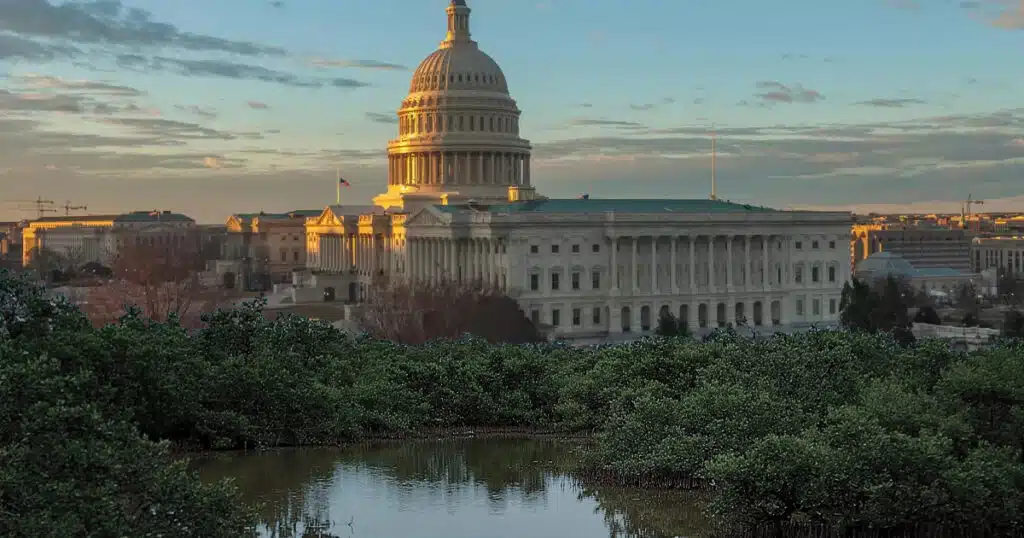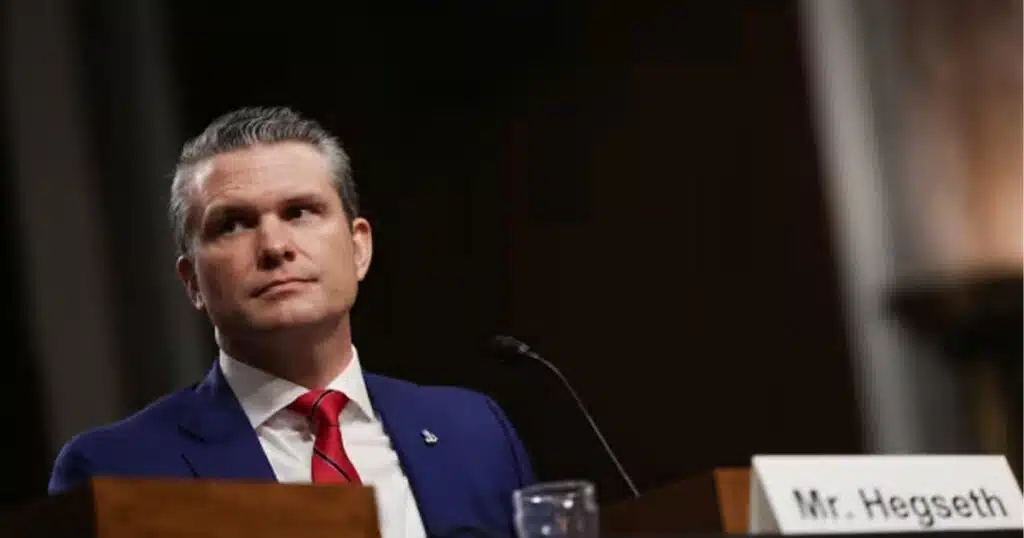
Choice Tax Breaks: The GOP’s Federal Plan to Transform Education
Buried in the 940-page “big, beautiful” budget blueprint is an unprecedented tax credit that, if approved, will be a long-sought victory for the private school choice movement in its drive to expand and break into Democratic states that for decades have blocked its path.
The tax credit program, which would provide scholarships to K-12 students to pay for private schooling, would mark a significant shift in federal education policy. The scholarships would be the first major federal initiative designed to propel the nationwide growth of private school choice, a largely conservative and Christian movement championed by President Trump and suburban Republicans alike. It comes just as the Trump administration dismantles large parts of the U.S. Department of Education that support public schools attended by the vast majority of 50 million students.
The private school choice movement, which started in 1990 to give families more options aligned with their values and children’s learning needs, remains a small piece of the education landscape. It supports about 1.2 million students in private and home schools in 35 states, primarily in the South and West. Advocates expect that the proposed federal program would jump-start a new round of expansion by providing scholarships to families to make private school more affordable.
Beyond boosting participation, the program is also a wedge to crack into states controlled by Democrats. These blue-state lawmakers, backed by teachers’ unions, have long resisted private school choice as a threat to public school enrollment. The granting of scholarships, advocates say, would plant a seed of interest among families in Democratic enclaves at a time when enrollment and academic performance have been steadily declining at public schools.
“In terms of the number of students served and the geographic scope, it would be the most important piece of school choice legislation ever,” said Patrick Wolf, a prominent scholar of the movement at the University of Arkansas. “Advocates hope it will provide a proof of concept in blue states and show that if a few thousand kids get scholarships the public school system won’t crater.”
But the potential of the scholarship program to meet the advocates’ goals has been weakened this week in the Senate. The program was included in the massive budget bill because, as a standalone measure, it wouldn’t survive a filibuster by Senate Democrats. The budget bill can be passed by a simple Senate majority, provided it only addresses fiscal matters.
The Senate parliamentarian, however, objected to the scholarship program, ruling, to the dismay of Republicans, that it seeks to impose a policy on the states. In response, Republicans had to amend the initiative to allow states to decide whether to participate, a change that could hamper the movement’s efforts to breach liberal jurisdictions.
Unprecedented Tax Credit
Teachers’ unions, Democrats, and rural Republicans have their own reasons for criticizing one of the most ambitious efforts by conservatives to change how American students are educated. The tax credit will incentivize individuals to make donations, capped at $1,700 a year, for scholarships by giving them a generous tax credit equal to the size of the contribution, a one-to-one payback that is unprecedented federal policy, according to an analysis from the nonpartisan Institute on Taxation and Economic Policy (ITEP). While a $1,700 contribution to a hospital or veterans’ group will result in a $600 tax break at best, according to the budget bill, the same sized donation to support private school choice produces a $1,700 tax cut, says Carl Davis, ITEP research director.
“This is also unprecedented in how Congress is choosing to cherry pick one cause and privilege it over all others,” Davis said.
Making the scholarships available to almost everyone, including most well-off families, is also spurring criticism. At a time of heightened concern over the $36 trillion national debt, the tax credits would reduce federal revenue while giving some scholarships to students who don’t need help with private school tuition. In Washington D.C., for example, a family earning up to $464,000 would qualify, according to an Urban Institute report.
The private school choice movement originally targeted low-income urban kids stuck in bad public schools – Milwaukee was the first – drawing some liberal support. But advocates recently embraced universal programs for all, now operating in a dozen states, partly for strategic reasons. By bringing higher-income families into the fold, Professor Wolf says, the movement gains a more powerful constituency to fend off attempts to slash choice programs. What’s more, high-quality private schools that have shunned choice scholarship students might begin to admit them, including those from low-income families.
The program originated as a $10 billion annual tax credit to be shared among states in the standalone Educational Choice for Children Act (ECCA), a significant sum considering that the biggest Department of Education K-12 program, Title I for disadvantaged students, costs $18 billion. A House committee reduced the cap to $5 billion before the Senate eliminated the cap altogether while also significantly lowering the maximum size of individual annual contributions to $1,700. The program would begin in 2027.
“We’re all disappointed that the bill is not as good as it was when it went into the committee,” said Jim Blew, co-founder of the conservative Defense of Freedom Institute and former assistant secretary in the Department of Education under Betsy DeVos. “If the Senate version is the final, it’s a big win for families that want to choose a better school for their children.”
A Blue State Workaround
The tax credit is partly a workaround of the blue wall of opposition to private school choice. Some 15 mostly Democratic states have never passed or have overturned measures that use public funds to pay for students’ private education. The battles have been heated, with state teachers’ unions typically leading the resistance to protect public school funding. In Colorado, the state education association helped defeat a ballot measure last year that it feared would lead to the establishment of a voucher program. Voters in Nebraska shot down an existing voucher program in 2024. Illinois is the only state in which the legislature ended a private school choice program. In the big blue states of California and New York, choice advocates have made little headway.
If the federal program becomes law, however, some Democratic states may come under pressure to opt in, partly because it doesn’t draw on local tax dollars. It’s free money.
“Leaders of blue states would have to explain to their citizens why they rejected free federal education dollars, instead leaving all that money for red states,” said Wolf. “That’s a tough sell.”
Scholarship granting organizations (SGOs), which will collect donations and turn them into scholarships, are the lynchpin of the program. They will be given an extraordinary amount of freedom in how they operate. A Catholic, Evangelical Christian, Jewish or Muslim based organization can give awards only to Catholics, Evangelical Christians, Jews or Muslims, respectively. They can prefer richer families, or poorer families. Or conservative or progressive families, or urban or rural. They can also be neutral, handing out scholarships through a lottery.
The only significant rules governing scholarship granting organizations require them to verify that families receiving scholarships earn no more than 300% of the median income in their area, a relatively high limit that includes 90% of all U.S. households, according to the Urban Institute. The organizations also must ensure the scholarships are used only for qualified expenses, including tuition, curricular and instructional materials, tutoring, testing fees, and educational therapy.
Blew, the former DOE official who helped draft the original version of ECCA, says giving districts such leeway would empower the reformers to respond to local needs. “The freedom is a good thing. It allows them to design programs that make sense in their communities, rather than imposing a model on SGOs that won’t meet everyone’s needs,” Blew said.
The Senate, however, added a key restriction on the organizations that could affect who gets scholarships. The earlier House version allowed almost any group to create an SGO, an approach supported by advocates. But the Senate gave states the authority to approve of the entities that will hand out scholarships, opening the door to influential interest groups of all political stripes.
In anticipation of the proposal’s passage, religious groups are leading the charge to take advantage of the scholarships, which makes sense since they run three-quarters of the 30,000 private schools in the U.S. About half of the religious schools are Catholic, a denomination that has seen a sharp 13% enrollment decline in its schools in the last decade. This helps explain why Catholics are mobilizing to capture the scholarship money to benefit their students and schools.
In California, the Conference of Catholic Bishops, the church’s public policy voice, is laying the groundwork to start one or more scholarship granting organization. The bishop’s top priority is to ensure they are “authentically” Catholic and carry out the church’s mission, which means scholarships will only go to Catholic students – with disadvantaged kids first in line – who attend a Catholic school, says Samara Palko, director of education at the conference. The scholarships could attract new students at a time of declining enrollment and closures in California, she says, and help Catholic schools bolster their tradition of high academic performance.
“What’s going to sustain our schools is our success in advancing educational excellence and this proposal could help with that,” said Palko, a former Catholic school principal.
As other religious groups follow suit, some leaders in the movement are raising concerns. By allowing SGOs to dictate where students go to school, the program could become little more than a private school subsidy that undermines the fundamental premise of school choice – namely that families should have flexibility in determining which schools their kids attend – according to a movement leader who asked not to be named in talking about this sensitive topic.
By comparison, in states with existing private school choice scholarships, families are in the driver’s seat, and this won’t change if the federal program becomes law. Students on state scholarships are free to attend any type of private school, and using the same funding, switch to an entirely different kind of school if things don’t work out. The funding travels with the student. Under the federal program, however, such freedom may not exist. If there isn’t a Jewish or neutral SGO in a state, for instance, then a Jewish student looking for a scholarship to go to a Jewish school may be out of luck.
“Many people in the movement think the tax credit is a really important piece of school choice legislation,” said the anonymous source. “Others fear it will become just a private school subsidy program.”
Scholarships for Wealthier Families
Which families benefit the most from the federal scholarships is another point of contention. Although Catholics and other groups plan to prioritize low-income families in keeping with historical practices of the movement, wealthier students are now reaping most of the benefits in some state school choice programs.
Arizona is one of the states that recently enacted universal or near-universal choice programs, making scholarships available to all families. In a recent study that compared participation rates in the Arizona program with families’ socioeconomic status, researchers at the Brookings Instituion found a “clear trend:” As poverty rates rose in the groupings, participation dropped. The highest participation – 75 scholarship recipients per 1,000 children under the age of 18 – was in the group with the lowest poverty level. Inversely, the group with the highest poverty level had the lowest participation.
What’s less clear is how LGBTQ students, a mostly unprotected class, would fare in the federal program. Title IX of the Education Amendments of 1972, which prohibits discrimination based on sex, applies to private schools that accept federal funds. While the Biden administration tried to extend Title IX to cover sexual orientation and gender identity, the Trump administration has rejected that interpretation.
Under either interpretation, religious schools have an escape hatch. They can simply declare themselves exempt from Title IX by saying it conflicts with their religious tenets, according to Department of Education policy. This suggests that religious schools that accept federal scholarships could legally turn away LGBTQ students.
“I worry that the proposal opens the door to many types of discrimination that we shouldn’t tolerate, especially from schools that receive federal support,” said Jon Valant, a senior fellow at Brookings and a co-author of the Arizona study. “LGBTQ students and kids of LGBTQ parents, for example, are at risk of being excluded simply because the schools that get scholarship funds might not want to include them.”
In Indiana, Chalkbeat said it found 27 private schools that suggested or declared outright that LGBTQ students weren’t welcome. In Arkansas, Cornerstone Christian Academy’s student handbook says that students who practice a “sexually immoral lifestyle” including “homosexuality, transgenderism, etc.” can’t attend. In Maine, Christian schools are now asking a court for an exemption from state law that requires them to accept all students, including LGBTQ students.
In Florida, a report in the Orlando Sentinel that 83 Christian schools refused to admit or could expel LGBTQ students set off a scandal in the state with the largest private school choice program in the country. Doug Tuthill of Step Up for Students, a nonprofit that administers the choice scholarships for Florida, was alarmed by the report of widespread discrimination and conducted his own investigation.
A supporter of LGBTQ rights, Tuthill visited more than 20 Christian schools around the state and found a more nuanced story. Although leaders of these schools consider homosexuality a sin, he says, their faith also requires them to welcome all types of sinners, as does the practical reality of having to fill seats. What really concerned them was the on-campus sexual activity of students of any orientation, a position that some of the schools publicly clarified. Other Christian schools in Florida, such as the Foundation Academy, are proud of their acceptance of LGBTQ students and say so on their websites.
“There were a few instances where parents who were activists in the gay rights movement were asked to leave a school because it was creating tension,” said Tuthill, the chief vision officer at Step Up. “But I saw little to no evidence that concerns me that kids are being discriminated against in Florida based on how they self-identify. What the schools care about is that students conform to the behavior that is expected of them.”
Critics of the movement have won many state battles over the years, and this one hinges on Republicans’ approval of the budget bill. Whether or not it reaches President Trump’s desk by July 4, as he demands, advocates are optimistic that at some point soon the tax credit program will be signed into law, opening a new chapter in the contentious story of private school choice.
This article was originally published by RealClearInvestigations and made available via RealClearWire.



